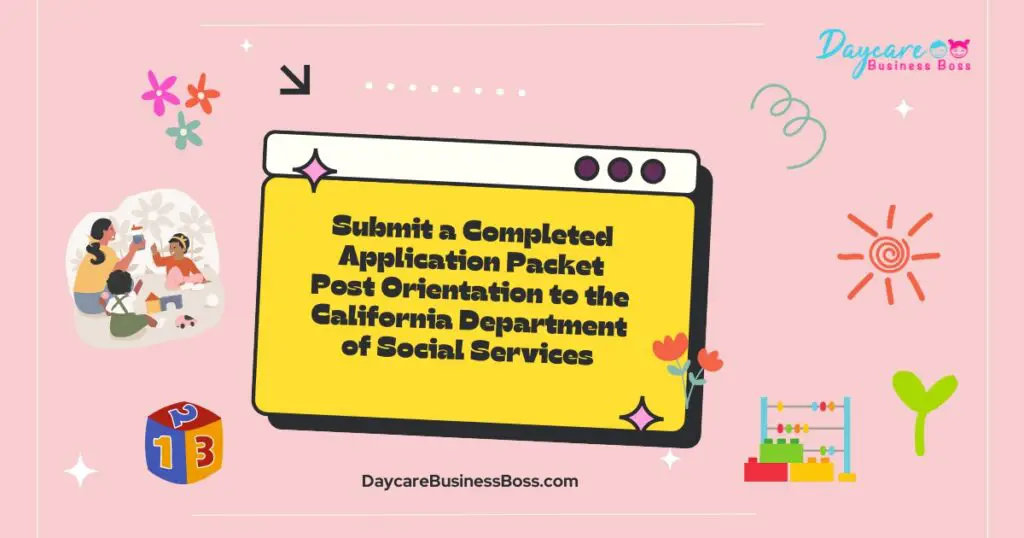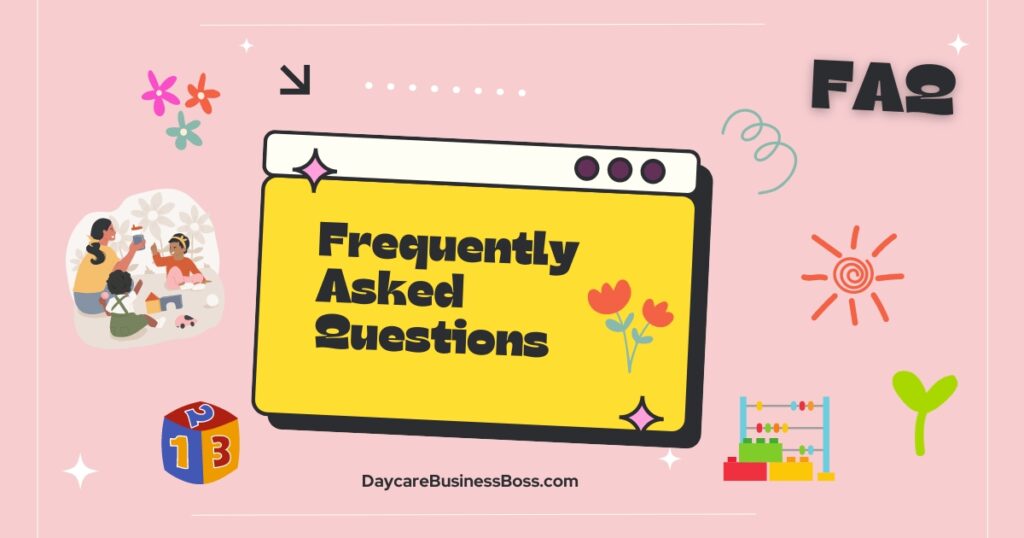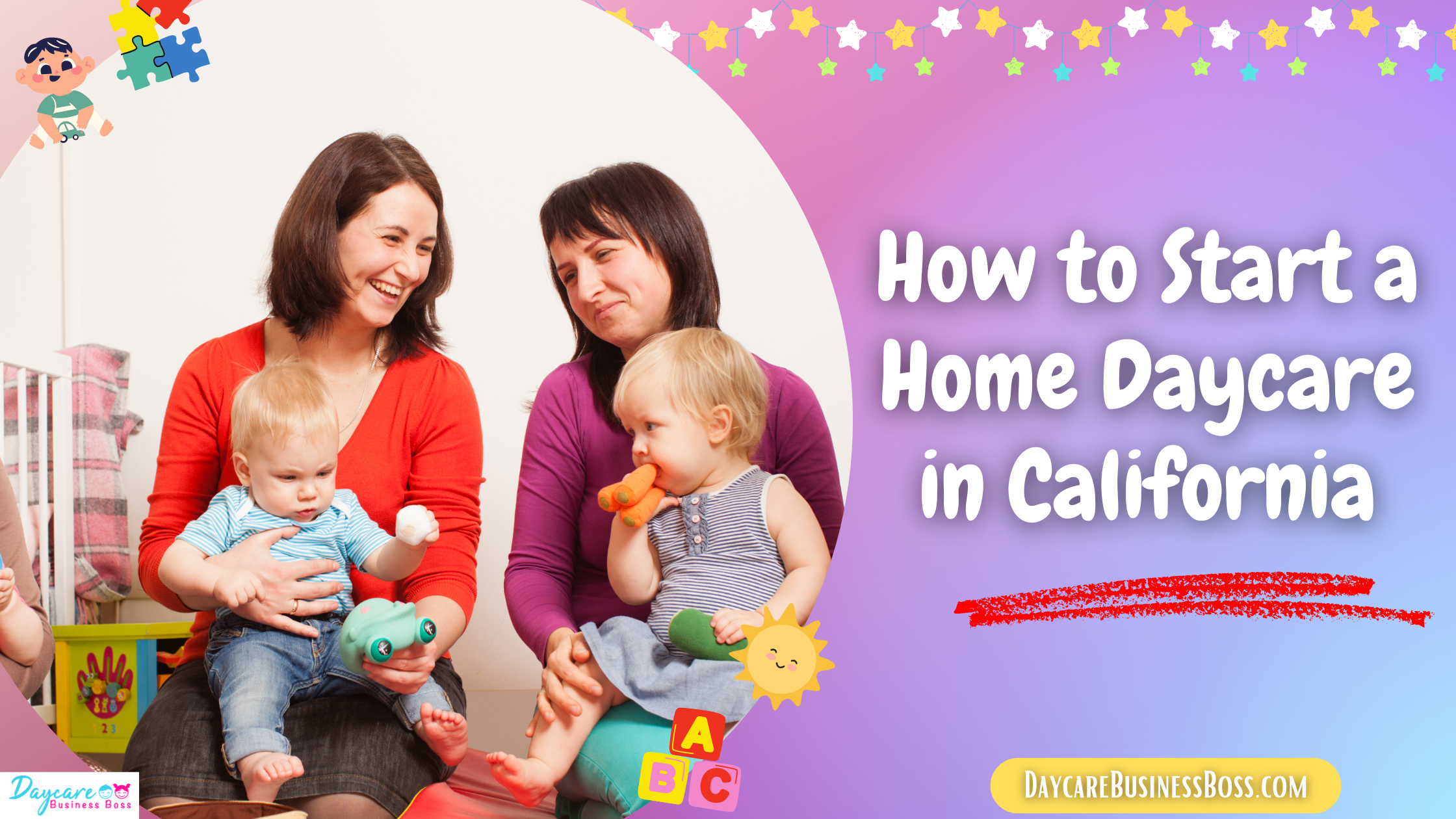Do you love children and helping them grow? Do you have a home that has some decent extra space you could use to care for some kids? And what about money? Do you want to make money doing something you already love in your own home?
If this is you, then starting a home daycare may be just what you should do. It’s not that difficult, but there are some steps you’ll need to take before you can start taking in children to care for.
Every state’s requirements may be slightly different. So, let’s take a look at the steps for how to start a home daycare in California.
- Review the requirements for licensing to make sure you qualify.
- Register for and attend a mandatory Family Child Care Home License orientation.
- Submit a completed application packet post orientation to the California Department of Social Services.
- Allow for a pre-licensing home inspection to be conducted.
- Make any necessary updates to your home. Pass a re-inspection.
- Receive your license!
So, let’s go through the steps with a little more detail.
Step 1–Review the Requirements for Licensing to Make Sure You Qualify
This absolutely needs to be your first step. The reason is because there are fees for some of the other steps on the list that are non refundable. For instance, there is a fee for the mandatory orientation you have to register for that is mentioned in Step 2.
There are going to be differing qualifications in various parts of California. You’ll need to check with the state licensing department, but also with the county and city you live in. Each governing entity could have additional requirements that you need to be aware of.
Here’s a list of some of the requirements you may have to meet:
- 18 years old or above
- Willing to submit to a criminal background check, as well as family members living in your home
- Have a negative tuberculosis test, as well as spouse living with you
- Willing and able to take a First Aid class and learn pediatric CPR; also provide proof of 15 hours of training
- Provide copy of deed or rental agreement for the home you’ll be operating in
- Have a fenced yard and fenced pool, if applicable
This is not an exhaustive list, but it’s much of what you’ll need to provide to obtain a license for operating your home daycare.
Step 2–Register for and Attend a Mandatory Family Child Care Home License Orientation
You have to pay a fee at the time of your registration. It should be around $25. You have the option of attending the orientation online or in person, normally. Should you have to cancel or you find out you don’t qualify for a license for your in home daycare, you will not be able to get your money back. The fee is non refundable.
Before you start your orientation, you need to have all of the required application forms printed and in front of you. There will be references made to these during the session. Other things that will be covered will include the rest of the licensing process, laws and regulations you need to know about, and information about the day-to-day expectations for operating a home daycare business.
Step 3–Submit a Completed Application Packet Post Orientation to the California Department of Social Services

Once you’ve completed the orientation, you’ll receive a signed certificate of attendance that needs to accompany your application packet when you submit it to the CDSS.
All of the forms in the application packet need to be completed entirely for you to be considered for a license. You also need to follow all of the instructions for adding any other paperwork that is required of you to be granted a home daycare license.
Be sure that you print the correct application packet. There is a different version of the application for a childcare center that is outside of the home. Here are the items on the checklist for the packet you’ll be submitting.
- Family Child Care Home License Application
- Current Children in Your Home
- Proof from Orientation
- Criminal Record Statements for All Residents in Your Home
- Emergency Care and Disaster Plan
- Statement Acknowledging Requirement to Report Suspected Child Abuse
- Facility Sketch
- Proof of Preventative Health Practices Training
- TB Clearances Proof
- Payment for Fee
Step 4–Allow for a Pre-Licensing Home Inspection to Be Conducted
Your home will have to be inspected to ensure the safety of all children that will be in your care. There will be someone from the CDSS visiting your home and inspecting the inside and the outside of your property. You may also have an inspection by a Fire Marshall. Depending on the outcome of that inspection, you may be just about done with your licensing process.
If the inspector finds there are things you need to make changes to or updates that need to be made to the home or the yard, you will have to agree to get them taken care of. That includes finding someone to do the work and then paying for it. In some cases, the amendments to your property may cost you a bit of money. It’s important that you do them, though, because if you don’t, it will prevent you from being granted your license to operate.
Step 5–Make Any Necessary Updates to Your Home & Pass a Re-Inspection
You’ll want to get on making the updates because you won’t be able to obtain your Family Child Care Home License until you have them all completed and have passed a re-inspection. The longer you wait to get the updates taken care of, the more you’ll be pushing off the opening of your daycare business.
Also, sometimes you’re at the mercy of the CDSS’s schedule allowances. If they’re backed up with inspections they need to do, you may have to wait a long time for that re-inspection. Anything you can do to speed up your process is a good idea.
Step 6–Receive Your License
Before you’ll be granted your license, you’ll have a scheduled site visit when you’re all set up and pretty much ready to open. This is called an initial licensing site visit. Once this has been completed, you will be approved and you can obtain your daycare license.
There are some cases where a license could be denied. In this situation, the applicant will be notified within 30 days of the receipt of their application. The reason for the denial will be indicated. The applicant then has 15 days to petition for a hearing to see if they can get the decision changed.
Once you have your license, it is valid until you forfeit it, surrender it, have it suspended, or it is revoked by a governing agency. You are free to move forward with your home daycare business. You will have unannounced visits from the Social Services Office from time to time, but you can get your business up and running.
An Asset to Your Community
The way we live today, there is such a high demand for good childcare services. Families often have two working parents in the home, making it hard for them to always be available to care for their children. That’s where you come in. Most communities across the country need more home daycare providers. You will be providing a valuable service to parents who want to know their children are having their needs met and are safe when they are away at work. Your home daycare business will be an asset to your community. It’s something you can feel good about doing for a living, so get your journey started today.
Some Related Questions

- What degree do I need to own my own daycare?
You actually don’t need a degree to own your own daycare. This is especially true if you’re going to open a home daycare business. Daycare directors who work in large freestanding daycare centers often do have Bachelor’s degrees in something pertaining to child development or education, but it’s not necessarily a requirement.
- How do I attract parents to my daycare?
This is the really fun part. You get to talk your business up. Word of mouth is very powerful, and you can benefit from word of mouth, now, that reaches far more people because of social media sites. You can even offer some kind of incentive to parents who refer other parents or for likes and shares on social media platforms. To get started initially, you could even host an event in your neighborhood so families around you know you’re there.
You’ll also want to make a business website to direct interested parents to, as well as look into using a child care app. It won’t do much good to get people talking about your daycare business if you don’t have anywhere for them to go to check you out online.
Please note: This blog post is for educational purposes only and does not constitute legal advice. Please consult a legal expert to address your specific needs.
Become an asset to your community and start your Californian Daycare with the help of our startup course and documents.

Meet Shawn Chun: Entrepreneur and Childcare Business Fan.
I’m a happy individual who happens to be an entrepreneur. I have owned several types of businesses in my life from a coffee shop to an import and export business to an online review business plus a few more and now I create online daycare business resources for those interested in starting new ventures. It’s demanding work but I love it. I do it for those passionate about their business and their goals. That’s why when I meet a childcare business owner, I see myself. I know how hard the struggle is to retain clients, find good employees and keep the business growing all while trying to stay competitive.
That’s why I created Daycare Business Boss: I want to help childcare business owners like you build a thriving business that brings you endless joy and supports your ideal lifestyle.

